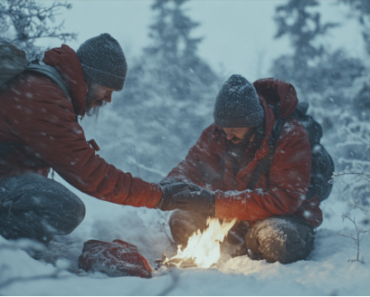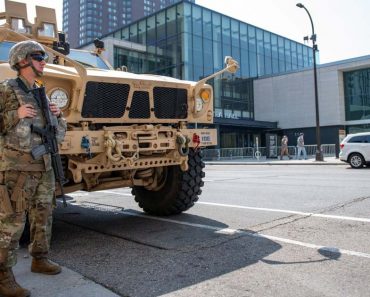For most of us, our homes are a key part of our survival strategy. Our “Plan A” is to bug in, staying home through the disaster and its aftermath. We only look to bugging out, our “Plan B” as a backup plan, should we be unable to stay in our homes, for some reason. That reason could be social unrest, but it is much more likely to be damage caused to our home by a disaster.
Granted, there are some disasters that no home can withstand. When a wildfire swept through the town of Paradise, California, in 2018, it burned every building to the ground. It is unlikely that anything that anyone could have done, would have kept their home standing, while everything else burnt down. Fire, tornadoes, earthquakes, flooding and other disasters can destroy entire neighborhoods or cities.
But there are always exceptions to that destruction. I’ve seen a number of reports of homes which managed to survive, when the entire area around them was flooded with three feet of water. That usually required heroic measures by the inhabitants of those homes; but compared to losing their homes, that effort was well spent. I wouldn’t want to spend three days building a sandbag wall; but that would be better than spending a year rebuilding my home.
What Disasters Are Likely in Your Area?
Regardless of where you live, there’s a chance of disasters in your area. The real question isn’t whether there’s a chance of disasters; but rather, what sort of disasters you are likely to face. Someone living in the middle of Kansas isn’t likely to have a problem with hurricanes; but they might have a serious problem with tornadoes. California is known for their earthquakes; but they’re not the only part of the country which can experience them. Each part of the country deals with its own types of disasters and those who live there know what they are.
The question is, just what sorts of disasters are you likely to encounter, there where you live and just how likely are you to encounter that sort of disaster? We don’t actually know the answer to that second question, as the only thing we can go by is historical data, and that isn’t a good predictor of the future. But for the most part, it’s about the best we have available to us.
One thing that historical data does show us is where certain disasters are more likely to strike. Florida, for example, seems to have been built to be a hurricane magnet. Every year that state gets hit by hurricanes, some serious and others not so bad. In either case, it has become commonplace enough for the citizens of Florida, that many have hurricane parties, gathering together with friends to ride out the storm. In a similar manner, there are those in Southern California who try to guess when the next earthquake will hit, hoping to make the most of it.
How is Your Home Built?
The next thing we need to look at is just how well built our homes are. Most homes, here in the United States, are built of wood frame construction, even if they do have a brick exterior. Wood frame has some distinct benefits, such as affordability and energy efficiency (they are easy to insulate). But at the same time, wood frame homes aren’t as durable under duress as concrete block construction.
Concrete block is the most common building material used, worldwide. I’ve spent a lot of time in Mexico and have seen what happens when concrete block homes flood. Other than damage to furnishings, the biggest thing that homeowners need to do is clean out the mud from the flooding and repaint their homes. In contrast to that, many of the people who lived in Southeast Houston spent two years rebuilding their homes, after the flooding caused by Hurricane Harvey. They had to strip everything out of the ground floor rooms, down to the studs, and rebuild it all; insulation, drywall, flooring, trim and finish.
There is usually little we can do about how our homes are built, unless we’re about to build a new home. We’re stuck with what we have and have to make the best of it. During normal times, that’s probably pretty good; but should a disaster strike, our homes may not hold up as well as they need to.
Considering how your home is built; what are the risks you face during your likely disaster scenarios? Let’s work with wood frame for the moment, as that is the most common here in the US. Wood frame doesn’t withstand fire well. Nor does it do well for floods. On the other hand, wood frame construction actually stands up fairly well to earthquakes, due to its flexibility. Newer wood frame homes, with more safety built into the framework, actually withstand the high winds of hurricanes well, although they are still susceptible to flooding.
What Condition is Your Home In?
The next question to ask yourself is just how good a condition your home is in, right now. You might need some help on this, getting a professional home inspection, like those that are done when a home is being bought. Home inspectors know what to look for and will often find weak points that you and I might otherwise miss.
At the same time, such a home inspection can uncover things that were not included in older homes, such as hurricane clips. Some retrofitting of older homes may be necessary; but will probably be difficult. Hurricane straps and clips are well hidden and getting to where they need to be attached may require removing soffit from the outside or some drywall from the inside.
Such repairs can be costly and time-consuming; but can save your home from severe damage. You’ll have to decide if you can afford such changes, in comparison to withstanding the cost of not making them.
Regardless, you should do everything you can to repair your home, especially the exterior. The better condition your home is in, the better it will withstand any disaster. Please note that this may include some high-ticket item repairs, such as re-roofing the home.
Make Necessary Modifications
It may be necessary to make some modifications to your home, in an effort to make it more resilient to disasters. Exactly what sorts of modifications are necessary will depend largely on the types of disasters you are likely to face, as well as the specific location of your home. Even within a city, there will be some areas which are more prone to damage than others.
One example of this is flooding. The USGS (US Geological Survey) keeps maps of potential flood zones. This has an impact on the home buying process, as some homes are built within what is known as a “100-year flood zone.” Buying such a home usually requires purchasing flood insurance as well.
However, there are things that can be done to make a home more flood-proof. Depending on the geography of the area you live in and the direction flooding would come from, landscaping can be added to divert water flow or surround the home with a dike, holding back the water. There are areas I have seen in the Dakotas, where homes and even towns are surrounded by dikes, because of annual flooding every Spring.
Similar actions can be taken for other potential disasters as well. Functional shutters (not decorative ones) can be added to most homes. When properly closed and latched, these provide protection against wind and flying debris, such as would be encountered during hurricanes, tornadoes and other storms.
Speaking of which, one of the weakest points on most homes is the garage doors, especially if they are aluminum. Hurricanes and other storms can crate a pressure differential between the inside and outside of your home. Such a pressure imbalance could cause garage doors to buckle. A simple bracing system, mounted to the inside of the garage doors, could make it possible for them to withstand such situations.
There are also actions that can be taken to help keep basement from flooding, such as coating the walls with a waterproof material. This is best done when the home is being built; but can be retrofitted as well. It’s just more costly to do it after the fact.
Some things that need to be done are as simple as installing the right hardware. Do all your doors have deadbolts? Are those deadbolts going into something more solid than a ¾” pine door frame? Properly installed deadbolts help keep the doors closed during high wind. Adding longer screws to the hinges helps too.
How well is your home tied down to the foundation? That depends a lot on who built it and how thorough a job they did. Adding tie down bolts, attaching the walls to the foundation can go a long way towards keeping the home intact in high winds.
In Conclusion
Each situation is unique; both in the sense of the disasters you are likely to encounter and the condition of your home. There is no “one size fits all” solution to making sure that your home is ready to face a disaster. But with a little research and proper preparation, you can make it much more likely that you’ll be able to bug in during a disaster, rather than being out in the cold.




























